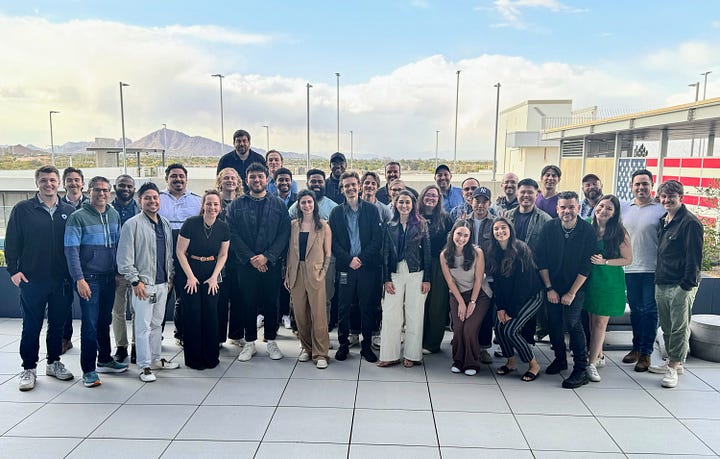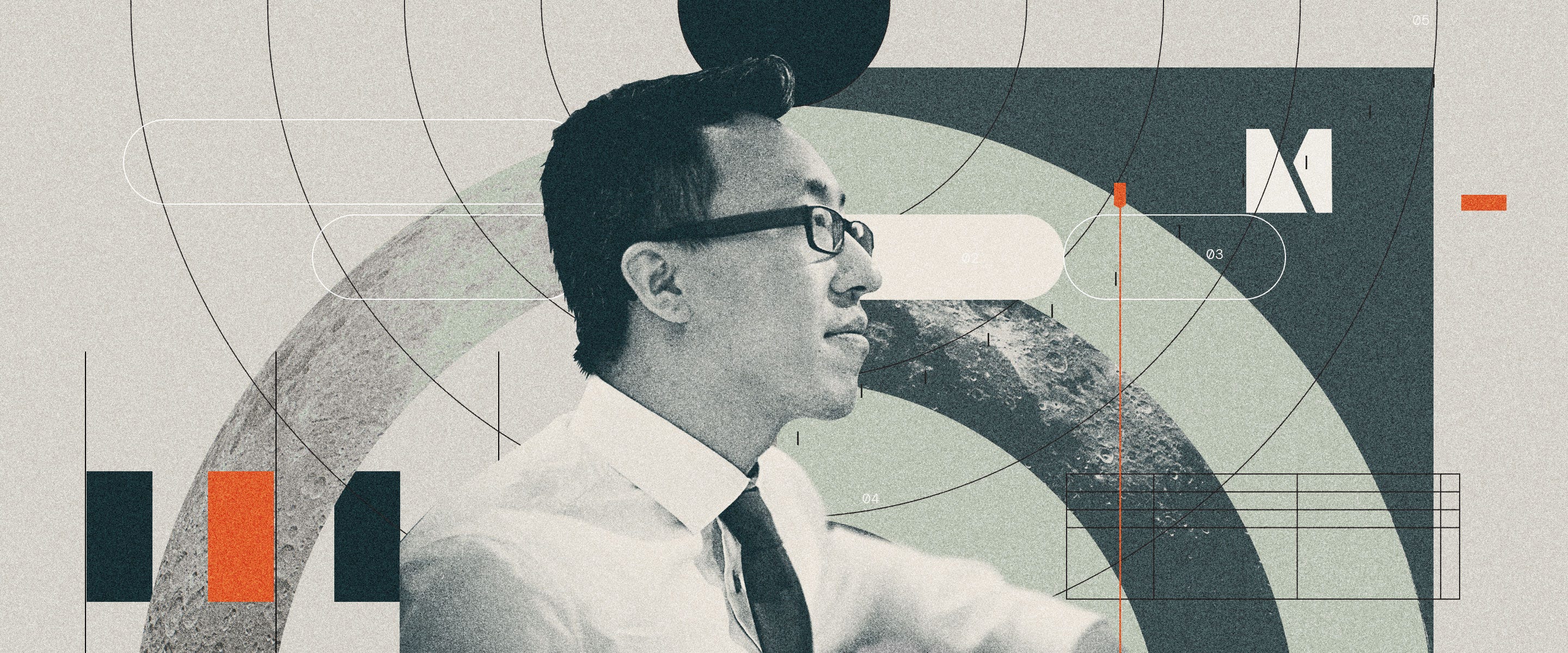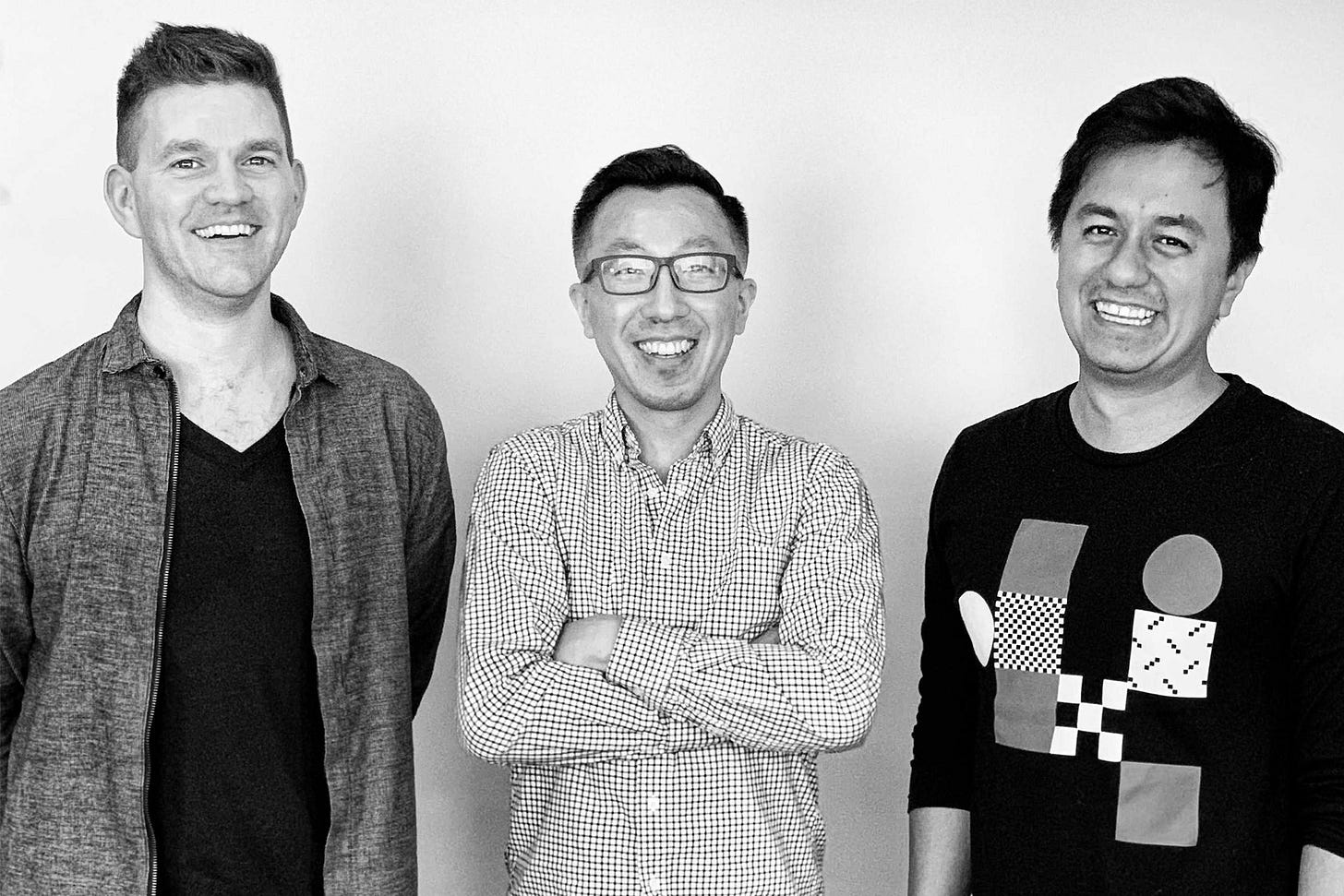Architect, Founder, CEO: Robert Yuen of Monograph
Why “balance” is a myth—and why being too nice can hold designer founders back.
As part of our ongoing Designer Founders series highlighting designers who've built successful companies, I sat down with Robert Yuen, Co-founder and CEO of Monograph.
Designers and founders can sometimes feel like they're cut from entirely different cloth. But Robert challenges that idea. He believes the same instincts that make someone a great designer also make them a great founder. And that the risks you take as a founder aren't actually that different from the ones you take as a designer.
Before starting Monograph, Robert spent over a decade as an architectural designer. He experienced firsthand the frustration of running complex projects without the right tools. Rather than wait for a solution, he built one with his co-founders.
Today, Monograph is a modern practice operations platform that helps architecture and engineering firms manage budgets, schedules, and project delivery—all in one place. It supports over 12,000 architects and engineers managing $14.5 billion in project fees. On average, firms using Monograph see a 21% revenue increase and 20x ROI in their first year.
Robert’s story demonstrates that when designers deeply understand the industry they're working in and pair that domain expertise with grit, tenacity, and tolerance, they can build category-defining companies. He's been able to solve for a niche that turned out to be anything but small, through consistent execution, day in and day out.
What we cover in our conversation:
Why Robert and his co-founders started Monograph
How living the problem led to building the right solution
Lessons learned in going from architect to CEO
Why “balance” is a dangerous myth for founders
The common mistake he sees first-time founders make
Below is an edited, easy-to-read version of our full conversation:
Let’s start with the big question: Why do you think there aren’t more designer founders in the world?
You and I believe that the characteristics, skills, and traits of a great designer match almost one-to-one to what would make an incredible founder. But I see a disconnect—the kind of risk designers are used to taking in a project isn't always seen as the same kind of risk required to build a business. And that disconnect scares a lot of designers away.
My advice to any designer at that edge is the same: embrace it. Don't be afraid. You're already equipped to solve these problems. And they are the same problems.
Take this example: how do I, as a designer, solve a financial problem when I'm used to solving a design problem? The process doesn't change. You still go through discovery. You still ask sharp, specific questions. You still iterate your way to a solution. That same process applies to sales. It applies to fundraising. It applies to hiring. It applies everywhere. It's absolutely a transferable skill.
You have to embody an attitude where you're constantly learning. Accept that everything you do is the first time you do it. When we first started, my only resource was Google. I had to learn finance, legal, operations, hiring. As you grow, your toolkit should expand. The founder network at a $1 million business is very different than at a $20 million business. Always ask: is your toolkit evolving with you?
“The first hurdle is just recognizing that the kind of risk you're already taking as a designer is the same kind of risk you'd take as a founder.”
You started your career as an architect. What pushed you and your co-founders to start Monograph?
When I was a practicing architect, the design process was the part I loved most. But everything around it—budgeting, coordination, operations—was painful. We were working on complex buildings using outdated tools and spreadsheets. It didn’t make sense. I felt like our work deserved better tools. Monograph came from that pain. I wanted architects to be able to focus on their craft, not waste time chasing down invoices or managing projects in Excel.
Before Monograph, my co-founders Moe Amaya, Alex Dixon, and I were running an agency. We were a team of architects who had become designers and hackers—building tech for other tech companies and, on the side, helping architects digitize their workflows: dashboards, intranet systems, timesheets. Over time, we realized we wanted to go all-in on building for the people we cared about most—our friends in architecture.
Monograph actually started as a subscription-based website-building platform for architects. We designed it to be a drag-and-drop interface that made it easy to edit content, choose fonts, and arrange elements. We even offered beautiful, responsive templates and a free concierge service.
While building this, we noticed architects had a deeper problem. Most firms had no clear way to track time, manage budgets, or understand how projects were performing until it was too late. That's when we pivoted and launched a really simple time tracking app just for architects. One client asked us to build a productized version of something we’d made for another firm. That was the lightbulb moment. We realized these operational problems were systemic across the industry.
How did it go from side project to a company?
We were reading a lot about Basecamp and Mailchimp, companies that bootstrapped alongside consultancies. So initially, we didn't even consider the VC model. We bootstrapped Monograph for a while, working on it nights and weekends while running the agency.
Then came the “oh shit” moment when Monograph was taking up more time than the agency. Either we go all-in, or we stop. We chose to go all-in.
Was there a turning point where you felt, okay, this is working?
There wasn't just one moment. I remember getting emails early on from architects saying, “This is exactly what we've needed for years.” That felt like real validation. When we raised our first round, it gave us the confidence and resources to move faster. Then we raised from Base10, who really understood the space, and that was a big signal we were onto something meaningful.
How did you navigate the transition from architect to CEO?
When we started, we had complementary skillsets. I was the one who enjoyed talking to people and had been responsible for bringing in agency contracts. My co-founders were incredible at product and engineering.
We quickly realized for this project to take off, we needed capital. Since I was already comfortable with the client-facing aspects, it made sense for me to step into the CEO role and focus on fundraising. I'd never worked in tech, but I figured I could learn. I spent thousands of hours watching YouTube videos of YC pitches.
There's a romanticism around being an architect. You go through seven years of school, internships, licensure…your identity is wrapped up in it. Letting that go was a real emotional shift. But seeing the impact helps. When architects tell me Monograph helps them finally understand their business, it reminds me why we do this. I'm still practicing architecture—I'm just designing systems instead of buildings.
What role does design play in how you run the company?
Design is everywhere. For us, it’s not just about how the product looks. It’s how we run meetings, how we write documentation, how we communicate as a team. We try to design everything with intention. That includes the company itself.
For example, our leadership meetings follow a highly structured format based on a modified Level 10 Meeting. This structure helps us pinpoint issues, iterate quickly, and continuously to solve the needs of business today.
I think designers are good at zooming in and zooming out. You have to sweat the details but also think in systems. That mindset is incredibly useful when you’re building a company.
Why do so many software companies treat design like an afterthought? Design is not decoration. It’s how you solve complex problems clearly.
I was an architect before Monograph. Architects have an extraordinary ability to zoom in and out very quickly. That mindset shapes how we build at Monograph: in our values (“design-driven” is 1 of 6 values), in our product (built for clarity and simplicity), and in our team (co-founded by architects).
But we’re not building software. We’re designing for the professionals responsible for our homes, schools, and hospitals. And they don’t need software. They need elegant solutions that work like they work, remove friction, and turn chaos into control. If A&E firms are distracted away from design, the built environment suffers.
– from Robert’s LinkedIn
How do you stay close to your users while scaling?
We don’t build anything in isolation. Every feature starts with a conversation. We won't build it unless we have at least two or three customers who will co-develop it with us. It’s not just “does the customer want this?” It’s, “will they sit down with us and help shape it?”
That approach is rooted in our background as architects, where problem-solving starts by listening well, deeply understanding the problem, and designing with people, not just for them. You see that in how we work today—architects and engineers trust us to hear them, and they see their input reflected in rapid product improvements.
We also host monthly webinars, have an open Slack channel, and hold monthly design partner calls. It's always a conversation.
We believe A&E firms deserve world-class service—because that’s what they deliver to their clients. For us, that means fast support, hands-on onboarding, continuous feedback shaping the product, and access to industry experts who share practical insights to help firms grow. That level of care is part of why so many customers mention how much they value that Monograph is built by architects who actually listen and help them move forward.
How do you balance the many roles you need to play as a founder and CEO?
I don’t like the word balance. If you’re starting a startup, you should never use that word. Balance doesn't exist, nor should it be the goal. The goal should be to find extreme alpha and extreme leverage. Within that chaos, what you want is harmony, not balance. Balance suggests splitting things 50-50, but harmony looks different depending on what week, quarter, or year you're in.
At the stage we’re at, it’s my job to set the goalposts – where we’re going. I don't need to be in every design meeting or iteration. But I do need to define what good looks like quarter over quarter, year over year. That's my responsibility across every department.
Specific to the CEO role, I do think there has to be a certain level of grit, tenacity, tolerance to be in that position. Because that’s the job: you have to make decisions even without the data. It’s about making risky calls. That is a very uncomfortable spot to be in, and you're in that spot every day.
But the reality is that if the objective is to continue to grow the business as big as you can, as fast as you can, incremental gains are never gonna get you there. So this means you're gonna have to make risky bets—and the size of the bet proportionally changes.
“I don’t like the word balance. If you're starting a startup, you should never use that word. Balance doesn’t exist, nor should it be the goal.”
What would you tell your younger self about starting a company?
If I were to do it all over again, my advice would be: don’t be so nice. A lot of first-time founders are too nice. We want to please everyone. But the faster you overcome the weight of “it’s not your job to please everyone” (and it’s actually not even your job to please anyone) the better off you’ll be. Your job is to build a company. Learn how to have those hard conversations, and you'll get there a lot faster.
What's next for Monograph?
We’re doubling down on collaboration. The way architects and engineers work together across firms is broken. It’s still email threads, outdated file sharing, scattered spreadsheets.
So we’re building the tools to fix that. We want to make it easy for different firms to collaborate in real time, stay aligned on budgets and timelines, and actually work as a team—even if they're not under the same roof. That’s the next frontier for us.
We’re still early in the journey, but we’re excited. There’s so much more to build, and we know who we’re building it for.


Robert’s favorite books
Revenue Architecture by Jacco van der Kooij (“I think every Designer Founder should learn a little bit of sales.” – Robert)
Powerful: Building a Culture of Freedom and Responsibility by Patty McCord
Traction: Get a Grip on Your Business by Gino Wickman
Atomic Habits by James Clear
Deep domain expertise is your unfair advantage. Robert’s experience as an architect helped him identify problems that weren’t obvious to outsiders. When you've worked in an industry, you understand its pain points firsthand.
Start with side projects. Monograph began as something that was built while Robert and his co-founders were running an agency. Similar to the advice Chris Kalani gave in our previous interview, you don't need to make a dramatic leap—start building on the side and see what gains traction.
Focus on one problem first. They also didn’t try to solve everything at once. What started as a simple time-tracking tool to address a specific pain point, later expanded into a broader platform that solved end-to end needs for architects and engineers.
Build with users, not just for them. Monograph won’t build features without at least 2-3 customers actively participating in development. This approach keeps the team focused on solving real problems rather than imagined ones.
Have the tough conversations. “Don’t be so nice” is Robert's blunt advice to his younger self. Building a company requires making decisions that won't please everyone and trying to make everyone happy slows you down.
Newly added to Designer Founders: Tiya Gordon (it’s electric), Aaron Epstein (Creative Market), Shiz Aoki (BioRender), Imran Chaudhri (Humane)
Nan Yu on why AI adoption is a UX problem
Designer-founded Canva is now the highest-valued female-led startup in the world
A class on prototyping with Cursor, built for designers and non-developers
Hero illustration by Adam Dixon
From Facebook Designer to Two-Time Founder: Chris Kalani
Our first Designer Founders interview was with Chris Kalani, Co-founder and CPO of Phantom. Chris's journey from a designer at Facebook to co-founding a $3B company offers valuable lessons for designers considering starting a business. He talks about finding your co-founders, choosing the right founding role, and why it's important to validate before launching.












The distinction he makes between balance and harmony was especially interesting to me. It brought to mind the use of the augmented 9th note in music, which creates a sort of tense dissonance that is borderline uncomfortable. But you get through that and then fully appreciate the resolution of that tension a bit later down the song. Many times we need tension or dissonance to create something exceptional, but it’s all still held together by a sense of harmony. In that way, startups are more like jazz, and big enterprises are more like classical music.